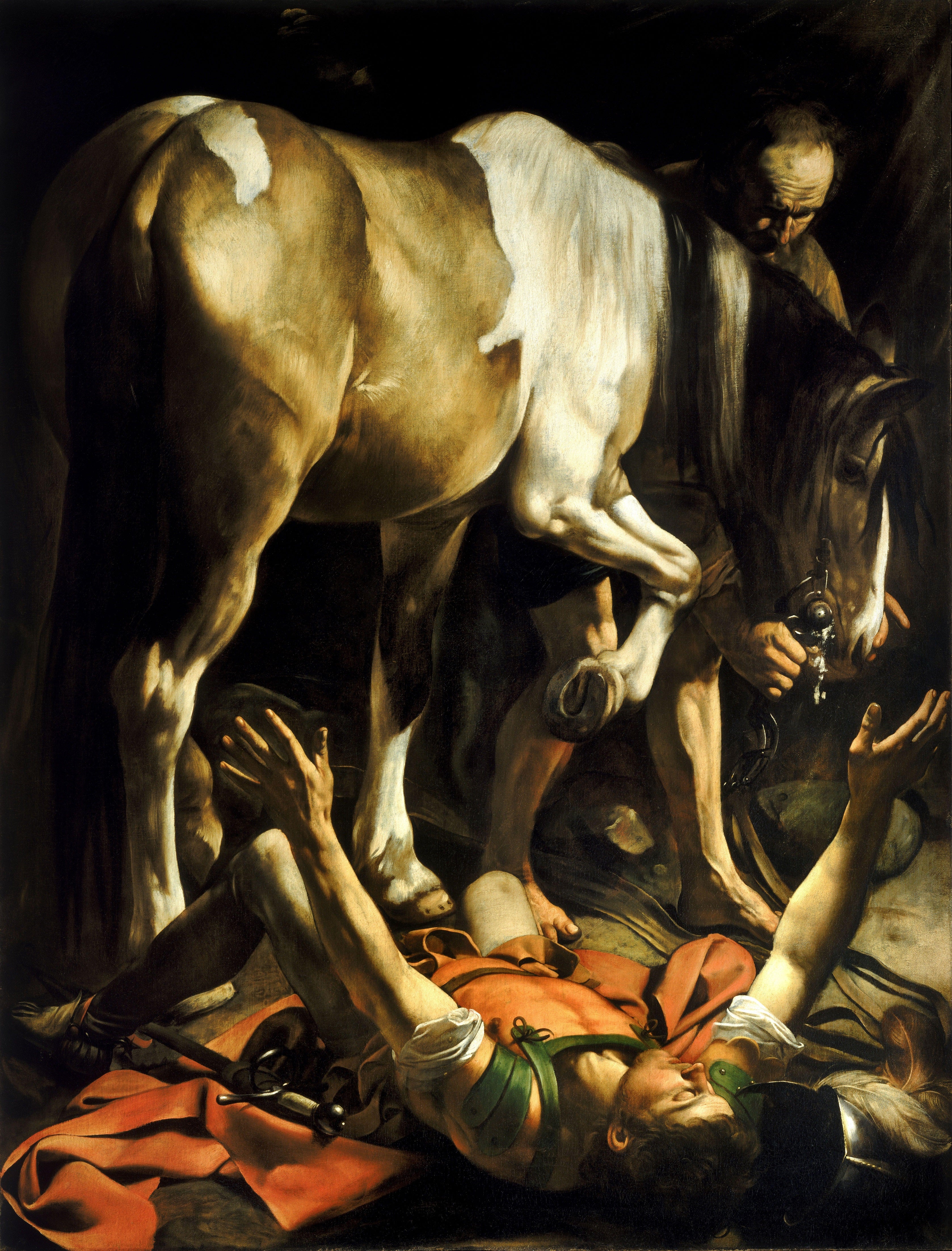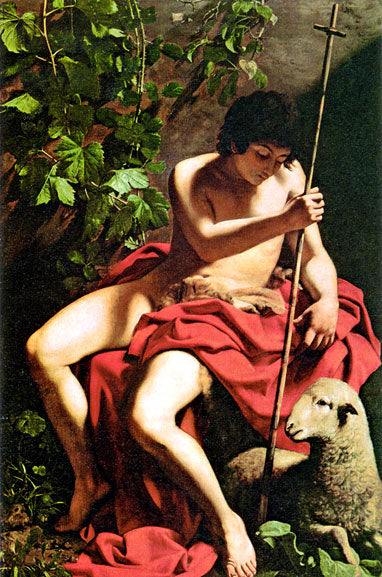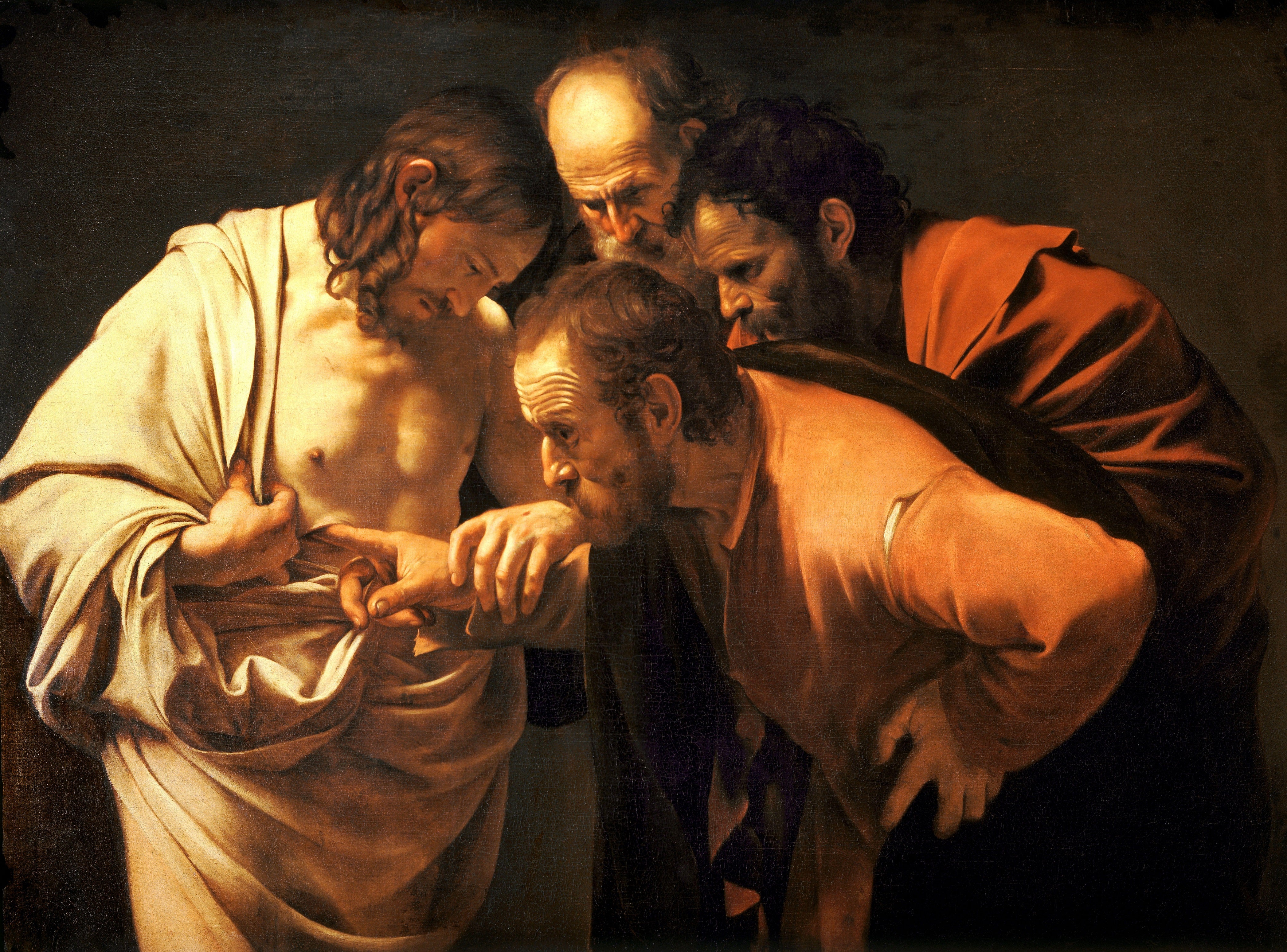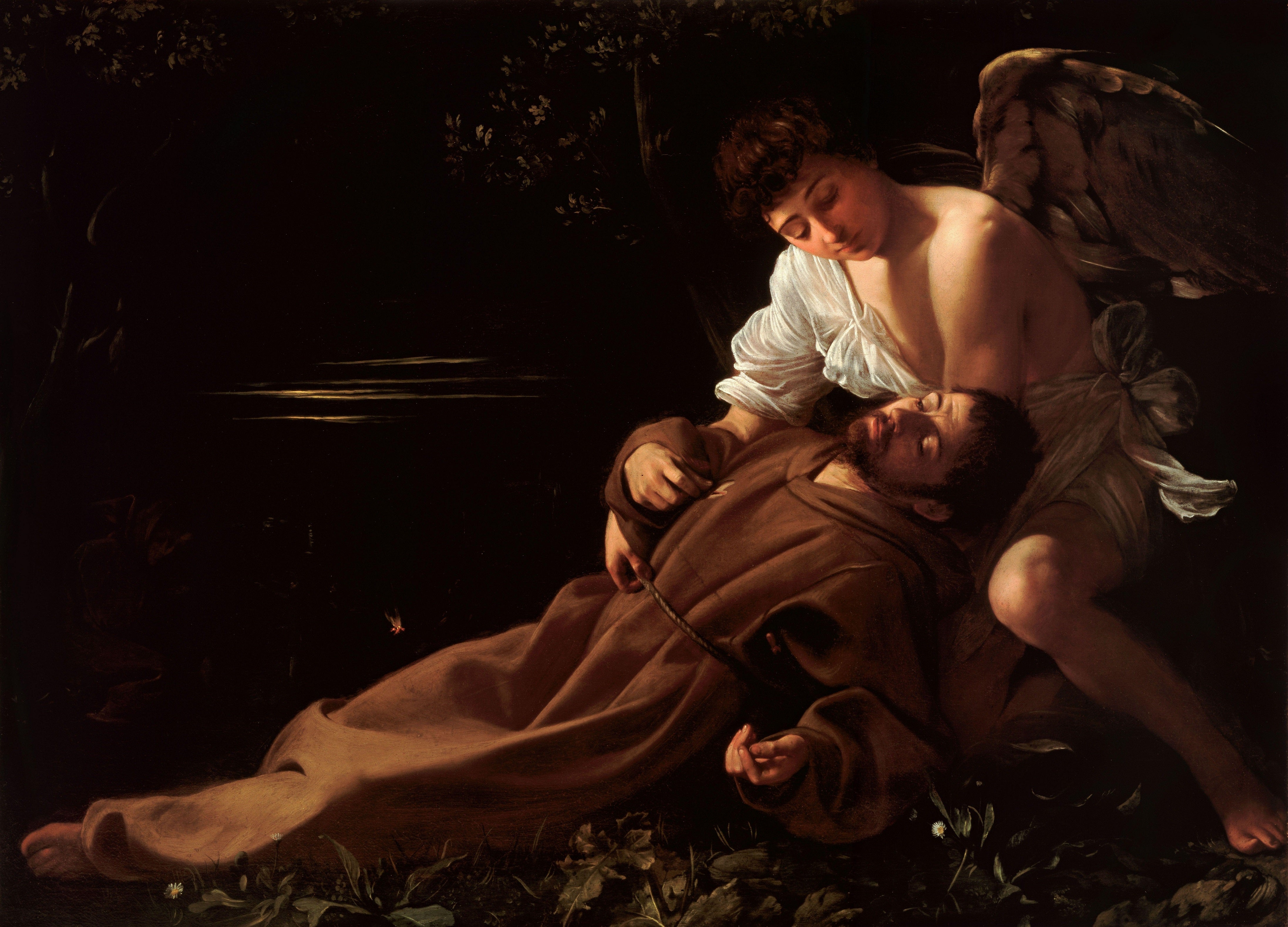
Merisi da Caravaggio Baroque Painter
Subscribe to our Newsletter for more artworks and coupons


















Caravaggio was quite the disturbed trouble soul. From this soul some of the most darkly beautiful biblical paintings came into existence. His artwork was both realistic and emotional. It was his brilliant handling of Tenebrims (dark creepy theatrical lighting) that won him hundred of commissions. Despite his success he had a knack for getting into dept. His gambling problems as well as his passive aggressive attitude earned him the graph of the Pope who put a hit on him. At the tender age of 38, Caravaggio died of a fever. But enough of info on his life. Let us focus on his work.
Judith
The most of the whole bulk of Caravaggio's work are biblical scenes. During the 1600s, there was a huge demand for inspirational Bible paintings. Many artist went to Rome to meet this demand. Mannerism had gone out of style and it was up to Caravaggio's realism to fill in the gap. I decided to start with a classic. Judith Beheading Holofernes. Caravaggio was a good friend with Gentiliski. Both shared painting tips and the like. In his version, Judith alone is taking the head off Holofernes. He looks really surprised as his anguished head turns toward Judith. The poor Judith looks deeply disturbed. The details in her face are exquisite. Another detail that I find fascinating is the arterial splatter that is emanating from Holofernes' wound. Considering how often Caravaggio got into fights it is safe to assume that he had a keen knowledge of how splashed all over the place. Very scary.
David and Goliath
Another important thing to note about the models of Caravaggio is how different they look from his contemporaries. Others used regular trained academy models. However, Caravaggio found beauty in dark spaces. At times he might run into a pauper and for a few coins this poor boy became kind David. This did not humor his rich patrons. I suppose that it would have been awkward for King David to be the lil orphan boy that steals meat from the monastery. It is truly quite a change of pace. David looks quite robust. The model must have been working barefoot for years. He might be a farmer... That Caravaggio did not fail to omit any detail. I think Goliath is missing a few of his teeth. He must have been a random undertaker.
David and Goliath version 2
Version 2 is far more fascinating. The blow in the head is quite realistic. Knowing Caravaggio he probably hit his model for real for his preliminary sketches. The way the skin dangles around the neck is truly something else. Who knows maybe he did use a real human head. The young man certainly does look well built. He is probably 16 or 15 years of age. The sword is a bit rusty up. but for creepy purposes the blade is perfect. The only source of light comes from the left up.The backpack seems a bit unnecessary...
Salome with the head of john the baptist
This Salome with the head of John the Baptist looks a bit more somber. The version of Caravaggio does bear some resemblance to Titian's Salome. Then again he was a pupil of a pupil (of a pupil) of Titian. Both do wear the same dress and have the same pose. Like Titian's, Caravaggio's Salome seems to be presenting it to her mother. The face of John has the same resigned look about it. The only difference is the addition of the maidservant and the executioner. Their somber expressions gives the air of a funeral. Overall, this painting emphasizes the tragedy of the situation. After all an innocent man just lost his head because he would not return the love of Herodias.
The sacrifice of Isaac
Now this is truly my favorite version of "The Sacrifice of Isaac". Just look at the frightened look of the poor boy. Abraham really did mean to kill his son. This scene is more hands on than the others. In this version the angel actually has to go to Abraham and stop his hand from giving the coup de grace. In this scene all the characters are wearing Biblical clothing. However, the landscape has a contemporary look. Around the back, I see a few houses and on top of the mountain a church is somewhat visible.Judging by the design I believe that it might be Baroque. I always love the interesting contemporary details that Caravaggio puts into each of his paintings.

















Nativity with Saint Francis and Lawrence
I cannot help but wonder why the contemporary outfits. I guess this was a strategy to make the audience feel as if they are engaged in the drama of the Biblical stories. Thus by dressing the Virgin and Joseph in Baroque outfits Caravagio helped the viewers identify with the characters. In doing so, Caravaggio managed in all levels to fulfill the criteria demanded by his patrons. It is also interesting to note the two anachronistic figures in this Nativity. Instead of the wise me, we have Saint Francis and Lawrence. Then again both saints are the patrons of Italy. Both participated in the crusades ect. So thematically speaking it works well to have these two in a painting for the Holy Roman Catholic Church.
Another interesting detail is the sash of the Saint. The literal translation is "Glory to the Church of God". That cherub's wings has quite the pigeon quality about them... The virgin looks a bit plain looking. She is not even wearing her traditional blue and red dress. She really looks like a commoner. A big difference between a commoner and a nobleman was the weight. All the trained expensive models where a bit on the chubby end. Considering how often Caravaggio got into dept it makes sense that he worked with whatever he could find. Whether it was on purpose or out of necessity the use of commoners in his paintings gave some life to his work. Truly, as I gaze at this painting I feel as if the Lord has been born.
Madonna di Loreto
The above scene from the part of the Nativity story where the shepherds come to adore the Lord. One is a middle aged man and the other an old woman. The man really does look like he has been tending sheep at the meadow. He looks quite dirty and unkempt. This is as realistic as it gets. Both hold their hands up in gentle adoration. The virgin is also barefoot. Caravaggio uses this to emphasize that wherever the savior is that place becomes sacred ground. So I suppose it makes sense that his characters are barefooted. And another thing, doesn't that kid look a bit too old to be a baby. Heck his feet look as if he has been walking for quite some time. No matter, he does look pretty cute with his small hands blessing the shepherds.
The Raising of Lazarus
Now this is one cool painting. Look at how epic Jesus looks ordering Lazarus to rise. I remember how the sisters kept telling Jesus that Lazarus was starting to stink. And look at him go!! He does have a corpse like quality about him. Its amassing how Caravaggio added rigor mortis to make Lazarus really look like a stiff. The way he is been carried up makes Lazarus look like a cross.The sisters are holding his head up soothing him back to life. Meanwhile, the apostles near Jesus are all crowded around him looking bewildered. The moments when Lazarus started coming to life must have been amassing. Another thing that I never quite understood about the Lazarus incident was why Jesus cried for him if he had the power to bring him back to life. Then again he was not able to work miracles in Nazareth because everyone saw him as a carpenters son. I guess without faith he could not tap into his God Powers. He did have human moments from time time to time...
The taking of Christ
Many of you are familiar with this scene.It is the moment when Judas kisses Jesus as he turns him over to the proper authorities. Historians say that considering Jesus awareness of Judas evil plans, he would have ample time to escape through the woods of Gethsemane. A quick jog and he would have been home free. Needless, to say he allowed himself to be taken. Based on the strength in which Jesus crosses his hands, Caravaggio allows the viewer to understand the amount of self restraint that Jesus had to use to fight the temptation of running away. The apostle that we see running away looks rather young. It seems that Caravaggio was alluding to Jesus beloved apostle (who was the youngest of the 12). So much for the beloved apostle...
Another thing, Jesus and his apostles in this painting wear traditional dresses while Jesus Roman captors sport black knight armors. Based on the design of the armors I recognize them to be Italian knights armors. Pretty interesting don't you think? I doubt such armors might have humor much his Italian patrons. This might explain the hit that Pope put on Caravaggio.
Flagellation Part 1
The story goes that Jesus was whipped twice before being sent to his death. Both where performed by order of Poncio Pilato. Usually there are three men performing the wiping. They usually tie Jesus facing the pole. In this version he is tied with is back against the pole. One of his captors is in the process of trying him up while the other whips him. He has no marks on his body for now. It seems like they are about to start...
Flagellation Part 2
In part 2 we see the three servants of Pilato. They have already given Jesus the crown of Thorns. He looks quite worn out by now... One is holding him by the head to get better leverage for the next strike. I don't like this part of the story very much..
Ecce Homo (Behold the Man)
In the next scene, Pilate who looks like a random old priest is asking if they went him to forgive the "King of the Jews". One of his men is putting on Jesus a velvet cape. Like in the other scenes surrounding his last days, Caravaggio puts Jesus with humble downcast eyes. He looks very frail and worn out by now. The way his right eyebrow is slightly raised gives one the impression that he is just feeling the velvet cape around his shoulders. This scene really looks down to earth.This is most important scene of the last night of Christ on this earth. Here Pilate tries one last time to save Jesus. His manners seems to demand that Jesus humiliation is enough punishment. He really does not think he deserves death.
Entombment
Unlike other Entombment, the Virgin Mary appears as an old woman. Before Caravaggio, the Virgin appeared forever young. Caravaggio chose an old woman to be more realistic. As the two men set Jesus down one of them has his hand inside the wound. This further emphasizes the fact that he is dead. However, the position of his arm follows that of all traditional Entombment paintings ( at least in this Caravaggio was consistent). Next to the virgin Mary, Martha helps her stand while Mary Magdalene holds her hands up toward the heavens. There are the three women that appeared in the narrative of the crucifixion.
Supper at Emmaus
The above painting shows the scene where the apostles recognize Jesus when he split the bread. The story goes that these three men where walking home together talking of the event. The resurrected Jesus started to walk home with them but they did not recognize him. They recognized Jesus when he recreated the last supper for them. Here Caravaggio makes Jesus look a bit different. He is clean shaven at least. Aside from the white mantle his clothing are the same as his pears. The way the food is arrange reminds me of a still life. The tablecloth and the chairs look baroque as well. These men really do look surprised. It almost looks like a snapshot of a movie scene.
The Incredulity of Saint Thomas
Saint Thomas really does look incredulous. He is sticking his finger quite deep into the wound. It looks quite realistic. I do wonder if maybe Thomas was voicing the same doubts that his peers felt. After all, look how they humble together to see if Jesus is flesh or ghoul. In those days, it was not common for men to just get up after being impaled in a cross. They did have a concept of wondering spirits and mindless Persian necromancer zombies. However this was something else. For starters Jesus remembered who he was and he could be felt. In the story they added some other details to prove that Jesus was here in the flesh. He ate and drank with his disciples at Emmaus.
In the early times, faith was based on solid proof. They needed to have as much physical proof that Jesus had resurrected. It is for this reason that the biblical narratives included such details as the incident at Emmaus and Thomas incredulity. After all, they needed to prove that the man who had suffered a terrible humiliating death had rising. Without his resurrection his teachings would be meaningless.
Caravaggio The Conversion on the Way to Damascus 1600
In this painting Paul just fall off his high horse. He is the odd one of the 13 apostles. He claimed to have seen Jesus after he rose to heaven. He used this in order to legitimize his apostolic claims Heck, he even went as far as to assert that he knew him better than the 11 that had lived and breathe with Jesus (he certainly was a better preacher) . Originally, he was a Jew that persecuted Christians. However, one day he heard a voice from the sky that asked him ,"Paul, why do you persecute me?". He was searching for Christ and he found him. The armor that Paul wears resembles a traditional roman attire. He carries a sword at his side. He must had been on his way to slay some Christian communities. It was said that he was temporarily blinded by the light. He truly seems to be trapped in some special kind of revelry. Above him, I can see the horse and the head of the old servant.


























































